Note: For the full experience, listen to the audio above, or look up ‘Story Paths’ on your favorite podcast player.
To watch the video of this conversation, go here.
—
Welcome to the Story Paths newsletter and podcast.
I’m pleased to present the first conversation in a series about play. In this season, I’m approaching people in the field of game design, child education, dance, art, decolonisation, and creative writing in prisons… I’m asking them a simple question: where does play show up in your work?
Today I’m please to welcome Matteo Menapace, a board game designer based in England.
If you’re into board games, of course you’ll love this conversation. But if you’re not, let me make a case here.
We might think of games as being a fun thing we can do on the side in life, but they’re actually intrinsic to nearly every part of our lives.
By the time you’ve listened to this conversation, you’ll be seeing traffic as a game, relationships, politics, economics. In all of these fields we are making game rules, then playing within them.
The thing is that sometimes we forget we can change the rules.
In this conversation, we get into:
-The 3 main elements of game design.
-How games can be a practice for life, or for life-games, if you will.
A spectrum of game types, from abstract to lifelike games.
-Competitive vs cooperative games
-And some trivia, including…
Did you know chess used to have 4 players?
Monopoly originally had a sister-game that’s its opposite, about abundance for all?
Paid subscribers can comment on this post with replies to the story prompts within the episode.
Matteo’s bio:
Matteo designs cooperative games and facilitates playful workshops for people to explore real-world challenges. In recent years he lectured in UX, web and game design, and was game designer in residence at the V&A in London. Matteo is co-designing Daybreak, a cooperative game about stopping climate breakdown.
Here are some pictures from Matteo’s test-gaming sessions


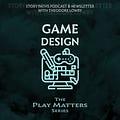



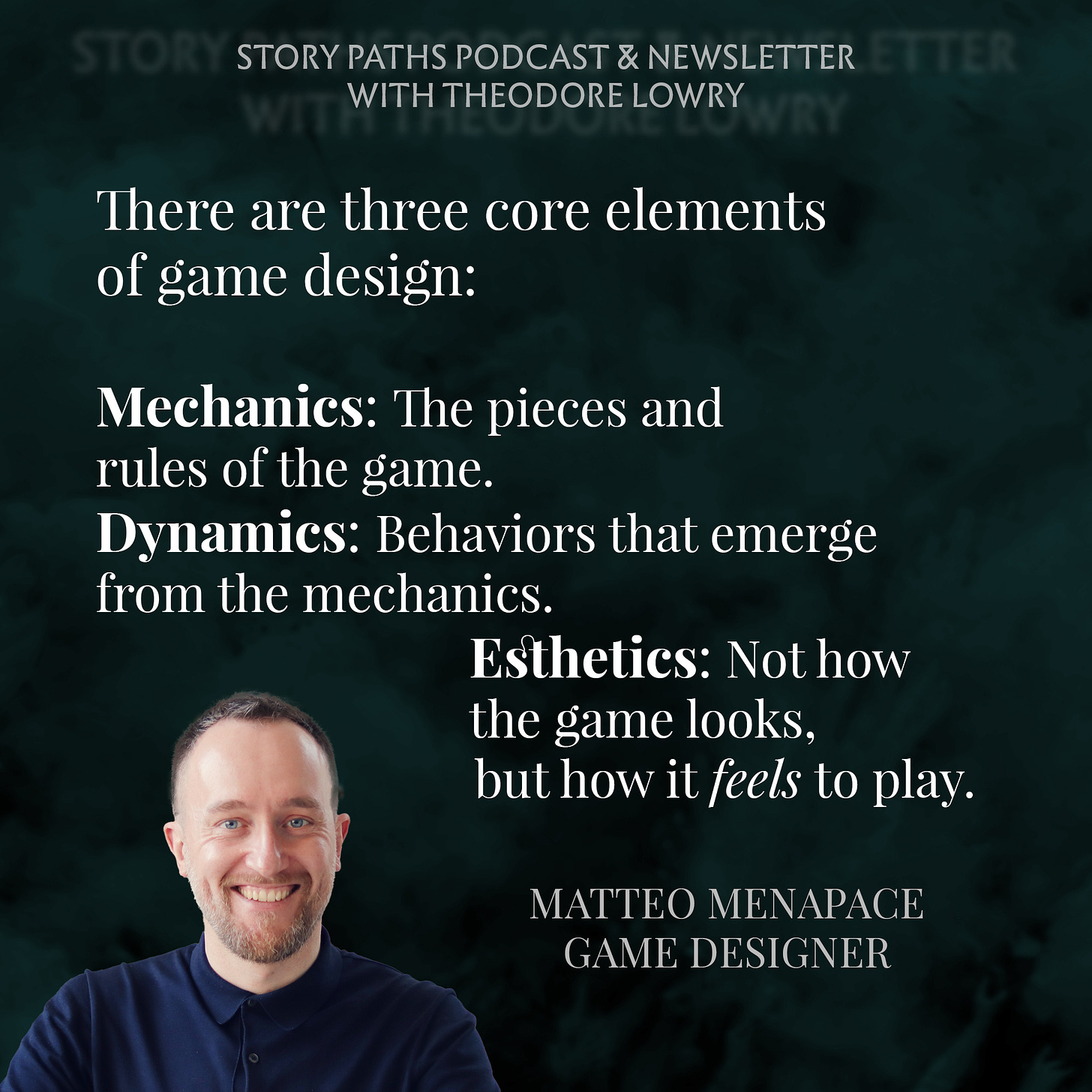

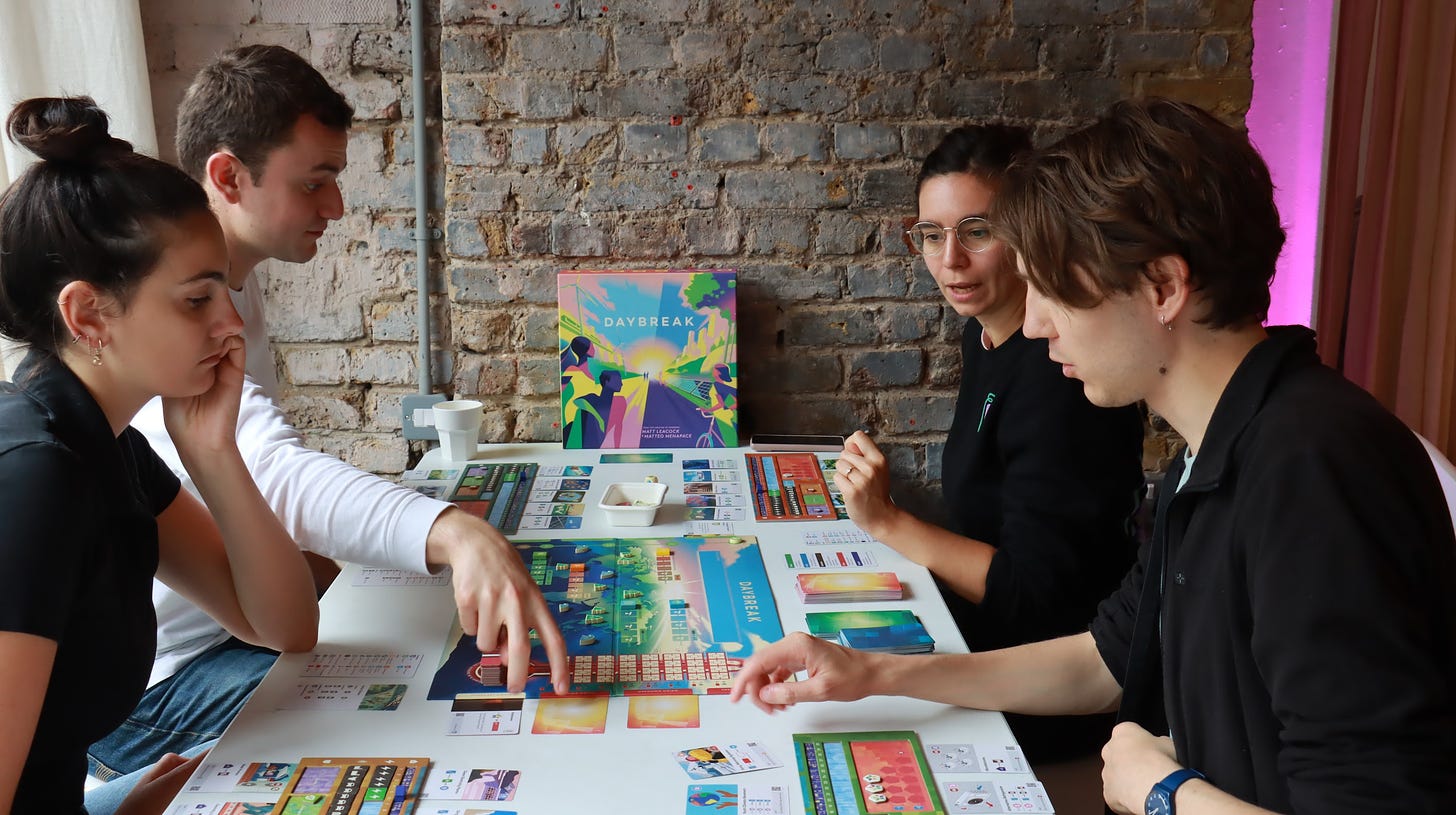
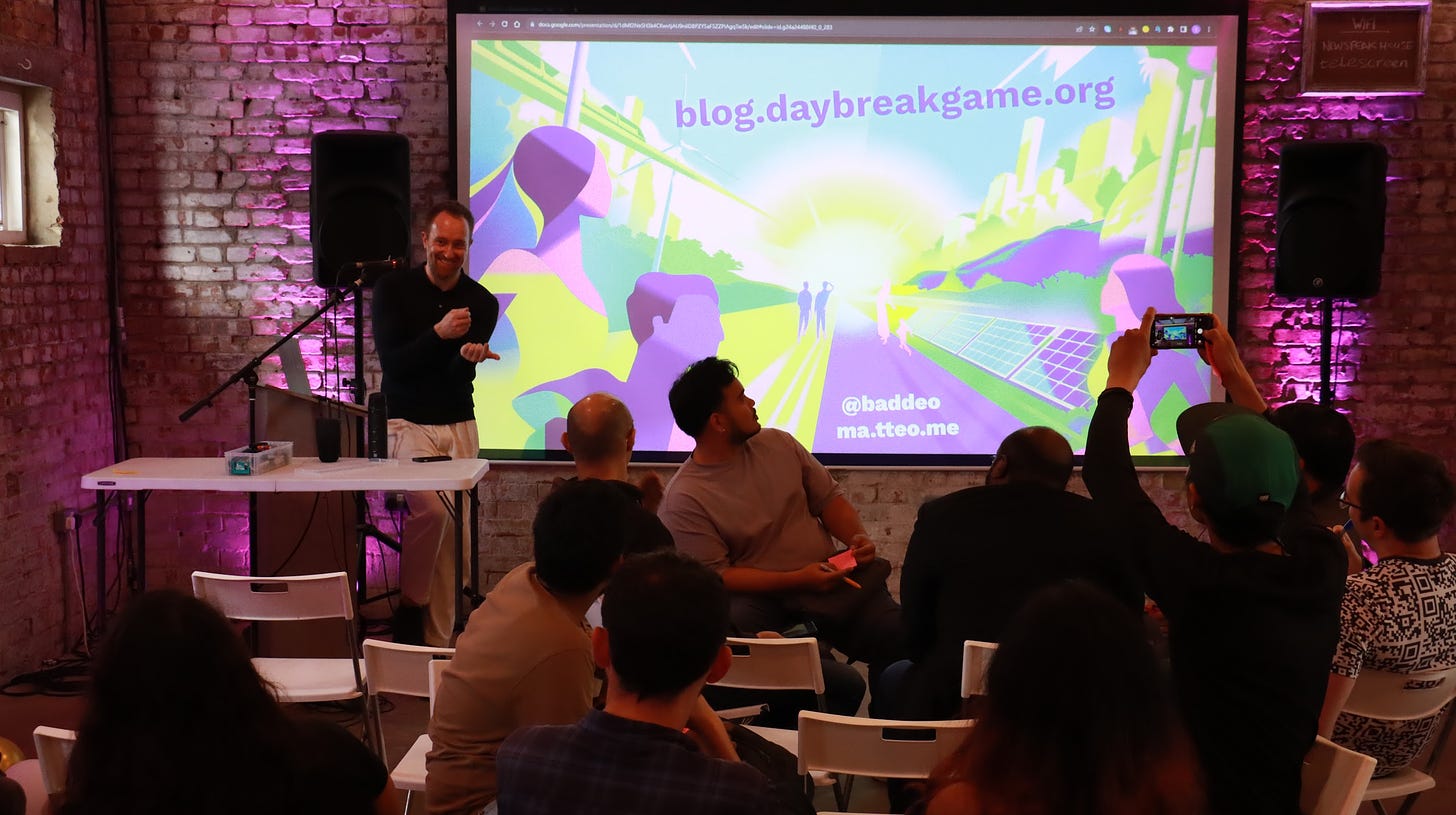
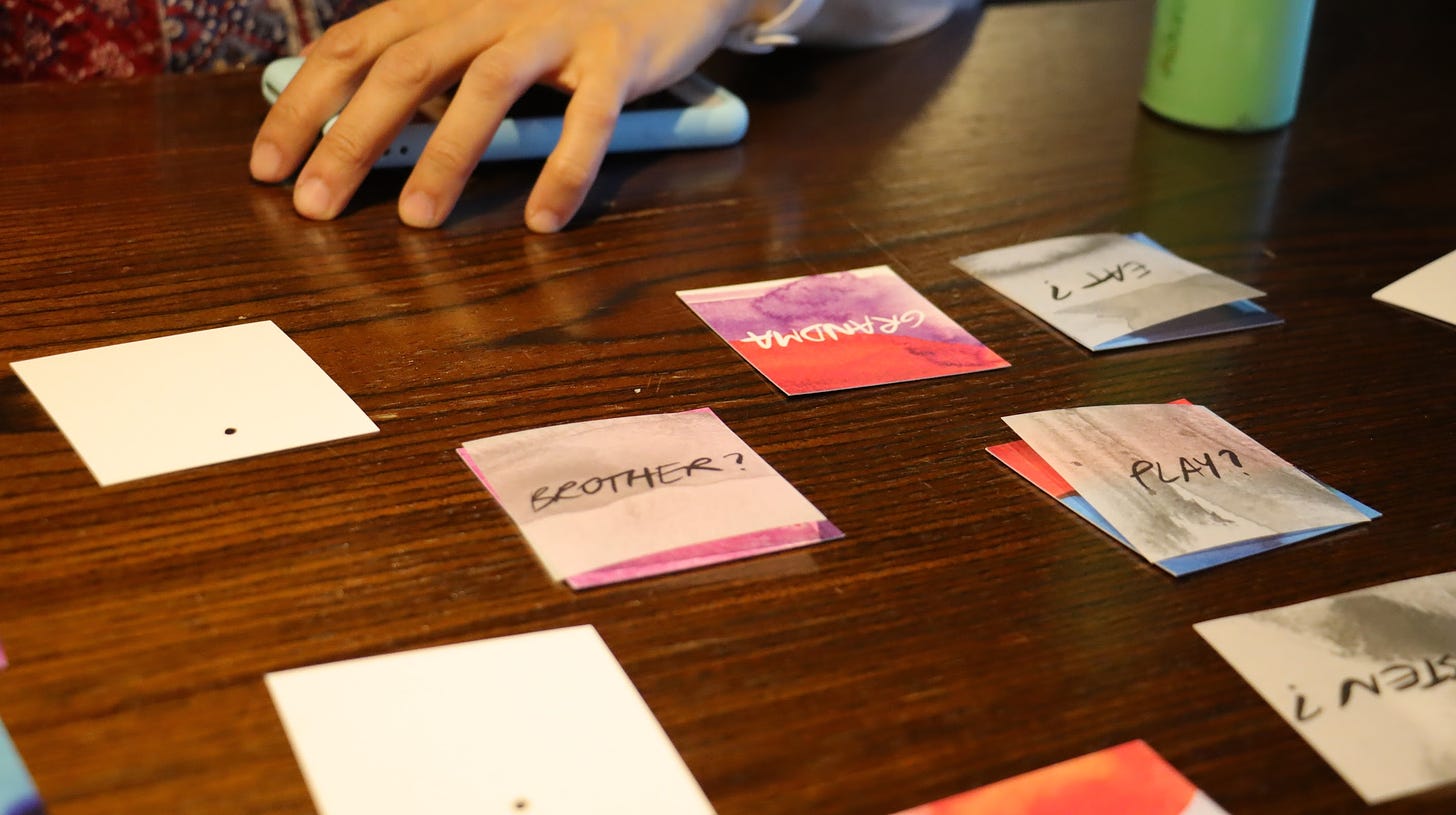
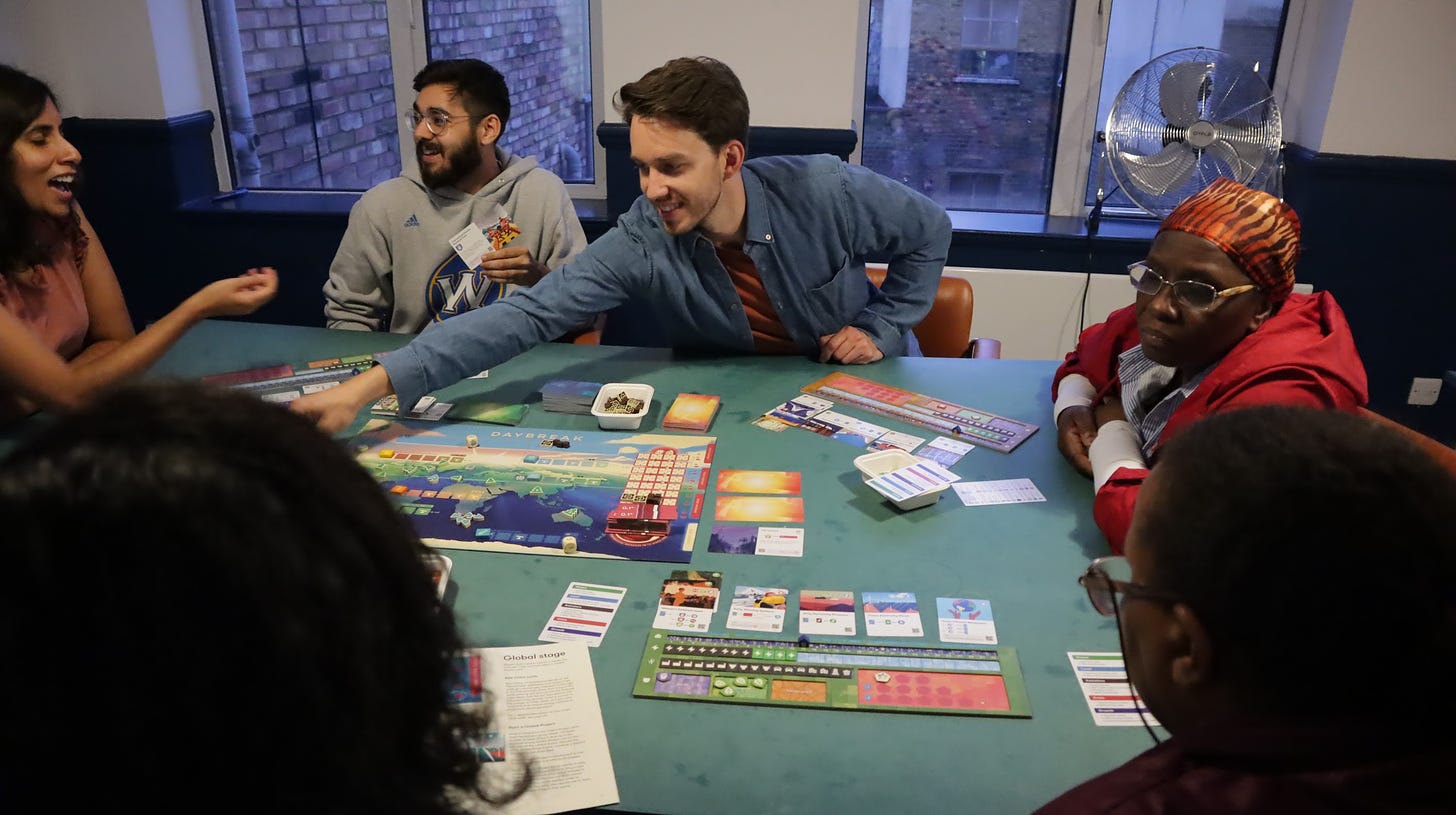
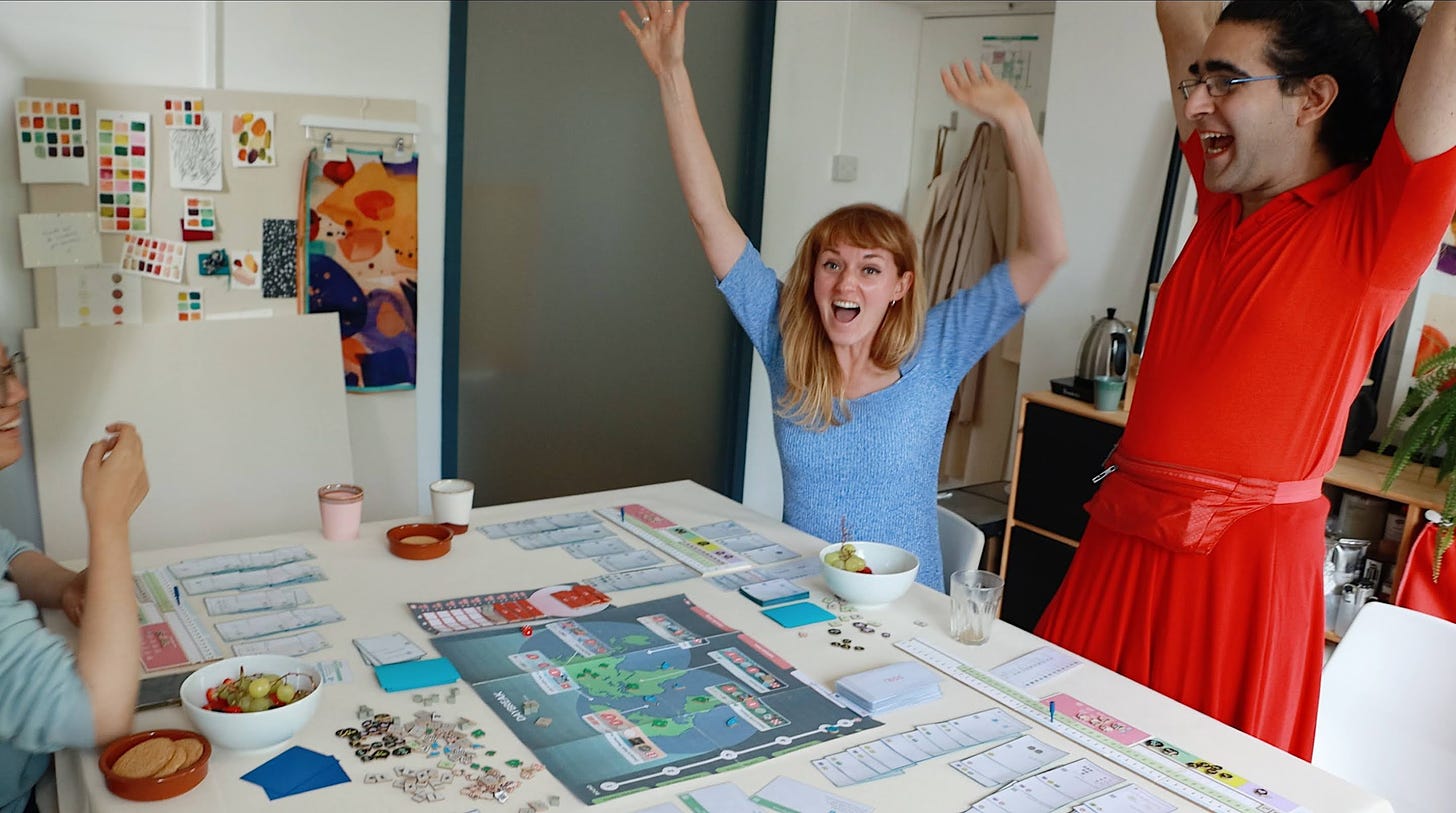



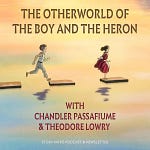





Play Matters Series: Game Design with Matteo Menapace